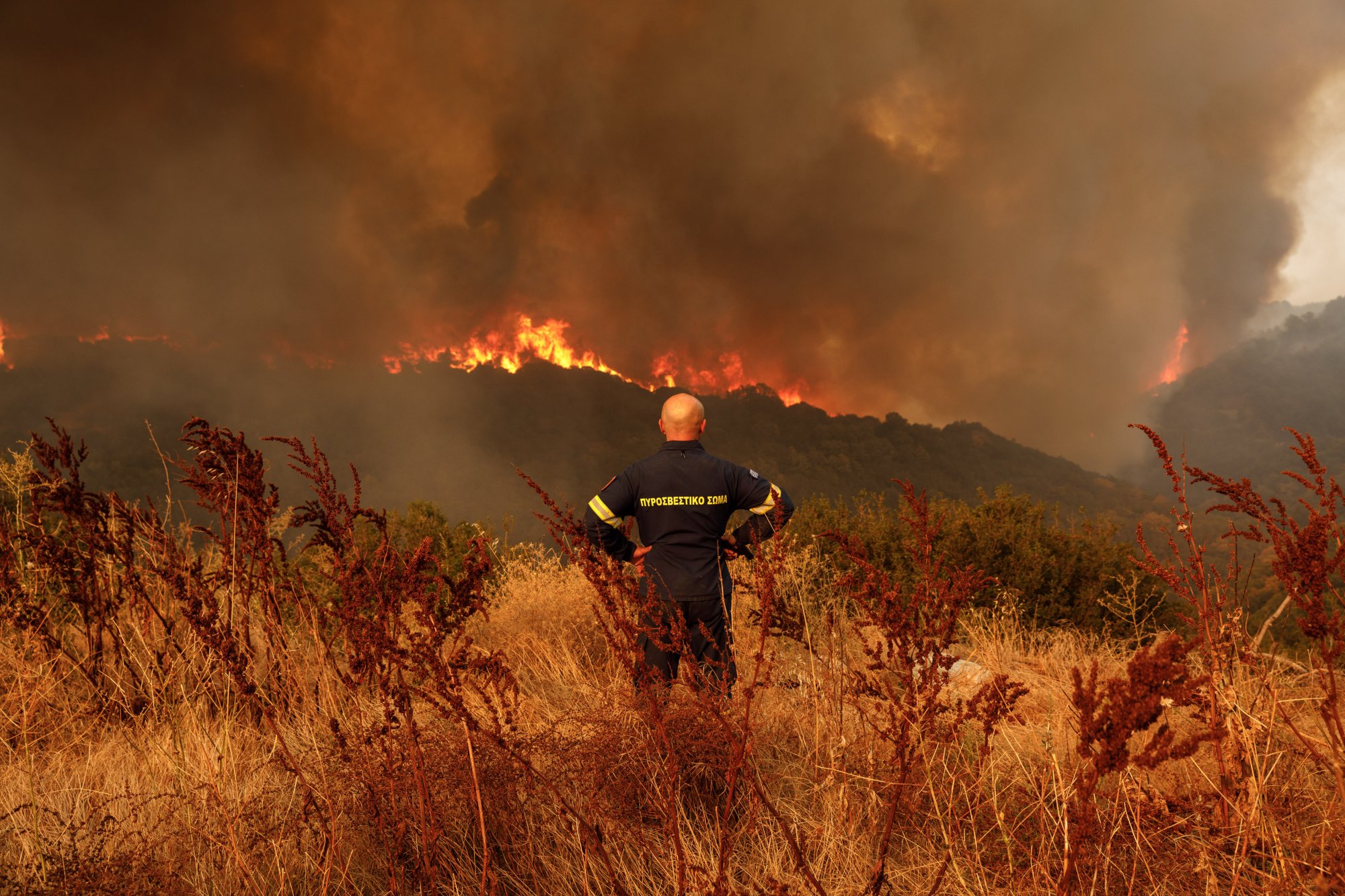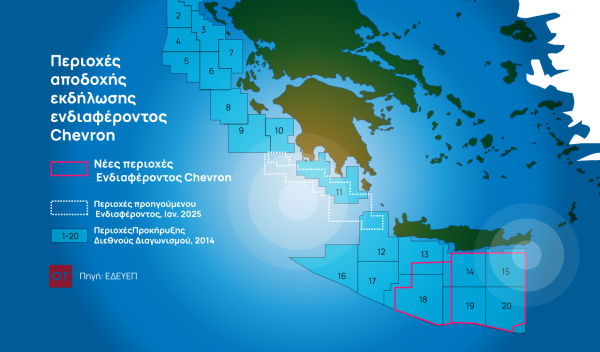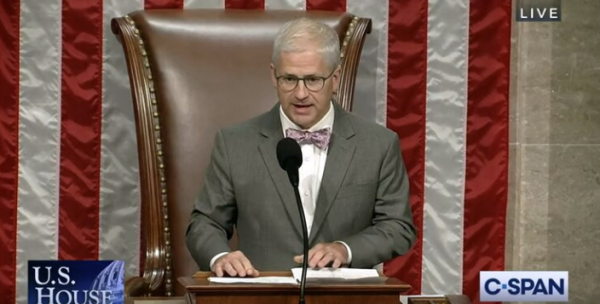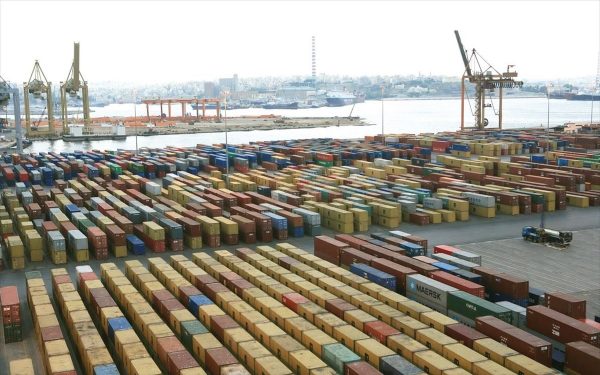
The capital, as well as many other regions of the country, have turned into a gas “chamber”, since the black smoke from the devastating fires travels huge distances.
The pollution registered by the competent service of the Ministry of Environment and Energy (MEP) has exceeded the permissible limits in terms of health-hazardous microparticles (PM – particulate matter). The corresponding measurements by the scientists of the National Observatory of Athens are also moving at their peaks.
Fire on Parnitha: This is how the fiery front started and developed – Watch timelapse video
In particular, yesterday evening at 7 p.m. at the measurement stations of the Ministry of Health in Piraeus and Peristeri, the air quality was very poor with concentrations of PM10 (particles with a diameter of 10 microns) and PM2.5 (diameter of 2.5 microns) hitting red. In particular, in Piraeus PM10 reached 104 μg/m3 and in Peristeri 126 μg/m3 (micrograms of pollution per cubic meter of air). The situation was also bad in Elefsina and Aristotle station with PM2.5 values exceeding the limits.
It should be noted that for PM10, a value above the limit of 50 μg/m3 is tolerated, up to 35 times a year. As for PM2.5, the annual limit is 25 μg/m3.
The smaller the diameter of the particles in the atmosphere, the easier they penetrate the body through the respiratory system and settle very deep in the alveoli of the lung and from there they pass into the bloodstream and reach various organs of the body.
In fact, they are blamed for serious short- and long-term effects on human health. However, in addition to the size of suspended particles, their chemical composition also plays an important role in the effects they may have on health.
The burden on Western Attica and Piraeus is also evident from corresponding measurements of the Observatory, while particles traveled from the fires raging in the Evros to the Ionian islands. Especially for Attica, PM2.5 particle concentrations hovered for many hours above 100 µg/m3, as in Petroupoli, Chalandri, Ilion, Thisio and many other areas.
However, the smoke from the fire in Parnitha seems to have affected other areas as well, such as Nafpaktos, where PM2.5 levels reached 42.3 µg/m3 yesterday afternoon and 33.4 µg/m3 in Corinth. Correspondingly, Ioannina was affected by the fires in Evros where concentrations up to 28.9 μg/m3 were recorded.
And since air pollution knows no borders, smoke covered much of the Eastern Mediterranean yesterday. According to the Observatory’s online portal, the fires in Thrace are producing huge amounts of fine particles which have affected Southern Italy and Malta.
The weather conditions that prevail in the Central Mediterranean favor the sedimentation of gaseous masses and with them the microparticles, which are located very close to the ground.
Medical instructions from the AMA
The Athens Medical Association of Athens draws attention to the citizens and especially to those who belong to the vulnerable groups of the population and are close to areas affected by the fiery blaze. The high-risk group includes the chronically ill, the elderly, pregnant women, young children and those suffering from respiratory and cardiovascular diseases (asthma, COPD, etc.).
Respiratory problems can appear immediately upon the occurrence of a fire, in a short or long radius from the point of fire, which may persist depending on the state of health of citizens and people belonging to vulnerable groups, and may cause coughing, difficulty breathing, shortness of breath, asthma attack, stinging eyes, burning throat, runny nose, headaches, fatigue, chest pain and fast heart rate.
AMA recommends as precautionary measures:
· removal from the area. If one lives near the affected areas, it is advisable to keep the windows of one’s house closed, so as to limit the entry of smoke into interior spaces.
· whether someone is a chronic patient with respiratory problems or not, if symptoms such as shortness of breath, severe cough and increased sputum or dizziness occur, they should immediately contact their doctor.
· -avoidance of unnecessary movements. In the event that this is not possible, any movement must be done by car with closed windows, while the air conditioning must be in the internal air recirculation option.
· it is necessary to use a mask to protect against the toxic mixture of particles and gases, which is particularly dangerous.
· constant hydration of the body with water is required.
Latest News

Airbnb: Greece’s Short-Term Rentals Dip in March Amid Easter Shift
Data from analytics firm AirDNA shows that average occupancy for short-term rentals dropped to 45% in March, down from 49% the same month last year.

Easter Week in Greece: Holy Friday in Orthodoxy Today
At the Vespers service on Friday evening the image of Christ is removed from the Cross and wrapped in a white cloth

Meloni and Trump Meet in Washington, Vow to Strengthen Western Ties
“I am 100% sure there will be no problems reaching a deal on tariffs with the EU—none whatsoever,” Trump stressed.

ECB Cuts Interest Rates by 25 Basis Points in Expected Move
The ECB’s Governing Council opted to lower the deposit facility rate—the benchmark for signaling monetary policy direction—citing an updated assessment of inflation prospects, the dynamics of underlying inflation, and the strength of monetary policy transmission.

Current Account Deficit Fell by €573.2ml Feb. 2025: BoG
The improvement of Greece’s current account was mainly attributed to a more robust balance of goods and, to a lesser extent, an improved primary income account

Hellenic Food Authority Issues Food Safety Tips for Easter
Food safety tips on how to make sure your lamb has been properly inspected and your eggs stay fresh.

Greek Kiwifruit Exports Smash 200,000-Ton Mark, Setting New Record
According to data by the Association of Greek Fruit, Vegetable and Juice Exporters, Incofruit Hellas, between September 1, 2024, and April 17, 2025, kiwifruit exports increased by 14.2%.

Easter Tourism Boom: Greece Sees 18.3% Surge in Hotel Bookings
Among foreign markets, Israel has emerged as the biggest growth driver, with hotel bookings more than doubling—up 178.5% year-on-year.

Greece to Launch Fast-Track Tender for Offshore Hydrocarbon Exploration
Last week, Papastavrou signed the acceptance of interest for the two Cretan blocks, while similar decisions regarding the two Ionian Sea blocks were signed by his predecessor

American-Hellenic Chamber of Commerce to Open Washington D.C. Branch
AmCham's new office aims aims to deepen U.S.-Greece economic ties and promote investment and innovation between the two countries







![Πλημμύρες: Σημειώθηκαν σε επίπεδα ρεκόρ στην Ευρώπη το 2024 [γράφημα]](https://www.ot.gr/wp-content/uploads/2025/04/FLOOD_HUNGRY-90x90.jpg)




![Airbnb: Πτωτικά κινήθηκε η ζήτηση τον Μάρτιο – Τι δείχνουν τα στοιχεία [γράφημα]](https://www.ot.gr/wp-content/uploads/2024/07/airbnb-gba8e58468_1280-1-90x90.jpg)

























![Airbnb: Πτωτικά κινήθηκε η ζήτηση τον Μάρτιο – Τι δείχνουν τα στοιχεία [γράφημα]](https://www.ot.gr/wp-content/uploads/2024/07/airbnb-gba8e58468_1280-1-600x500.jpg)


 Αριθμός Πιστοποίησης
Αριθμός Πιστοποίησης